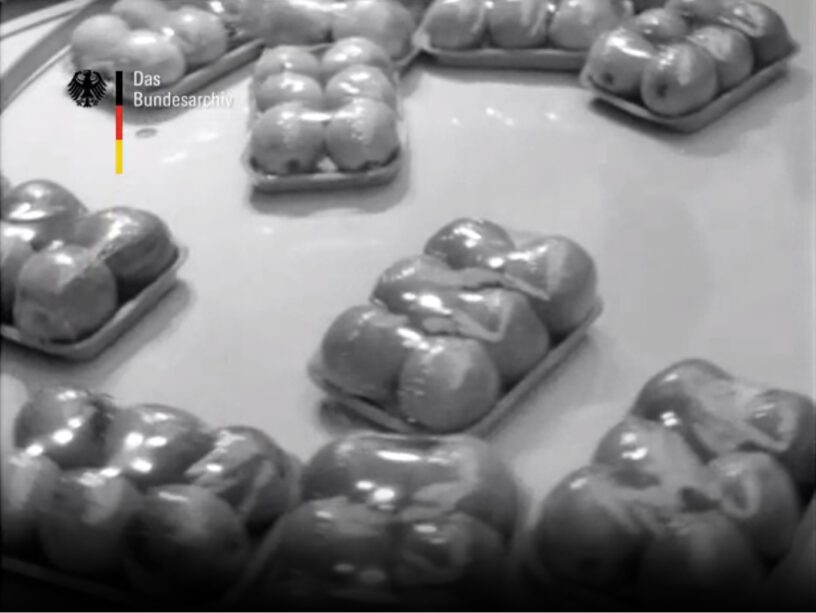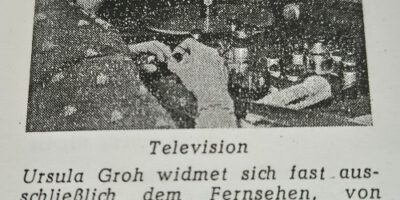Newsreels of the 1950s and 1960s represent the past, and mirror the present and environmental future?
Before television was established as a mass medium in Germany, the cinema newsreel was an important medium and the only way to convey news and ideas to a wide audience through impressive moving images. An edition contained 8 to 15 reports on a vast variety of topics: politics, economics, disasters, fashion, news from foreign countries, art exhibitions, trade fairs, animal stories, city scapes, and sports. Each report was underscored by music, sound, and commentary text.
For the design of a report, material from different sources was edited: photographs, newspaper headlines, animation film and staged scenes. Archival film and even pieces of feature film were inserted in annual reviews and flashbacks to the ‘good old times’ of the 1920s or to the horrifying Second World War. Besides looking back, the reports reveal topical problems, which are still common for us today, e.g. environmental problems, traffic collapse, air pollution, care crisis, and use of plastic packaging (see NDW No. 666 from 2 November 1962). They addressed also visions of the future. In the mid-1960s, the West German newsreel Zeitlupe contained a section, titled „Die Welt von morgen“ („The World of Tomorrow”) with reports on concrete architecture, new energy sources (e.g. nuclear power) and technological developments, such as automation and robotics. The films conveyed the ‘space race’ of the power blocks to normal people and critizied the design of uniform cities. Pictures and Hammond organ sound supported the futuristic touch of a report. Comparing today’s news media to newsreels, we can recognize that the cold war has not ended – moreover, it even seems that the history repeats.
Today, parts of newsreels are used in documentaries to shape an image of ‘yesterday’, which was once the present and future. Then and now a lot of topics remain unmentioned. But in the sense of public history we should do more, e.g. an exhibition on newsreel’s production and reporting on environmental problems of the 1950s and 1960s in comparison with TV-documentaries or reports on the same subject 60 or 70 years later.
Presentation at the RE:SOURCE 2023 conference, Venice, 16 September 2023
Handout We might have seen it coming
Does the topic fit for a journal article or book chapter?
Let me know!
Leave a reply – leave comment!




Schreibe eine Antwort